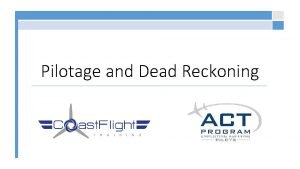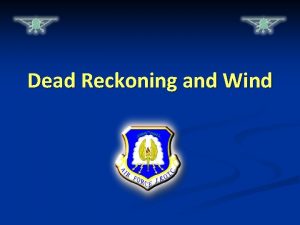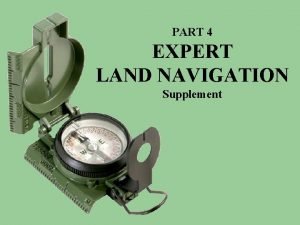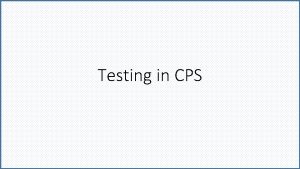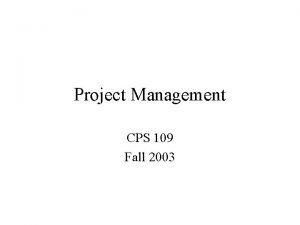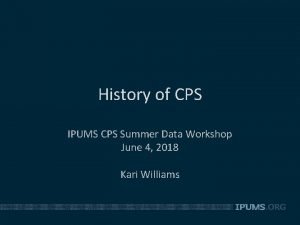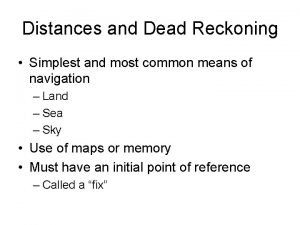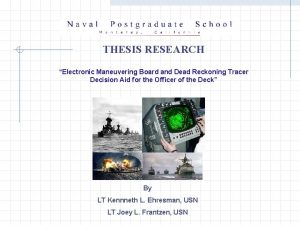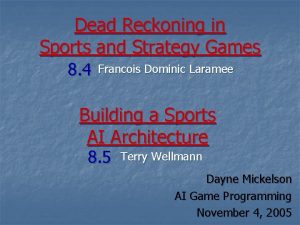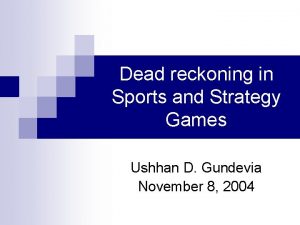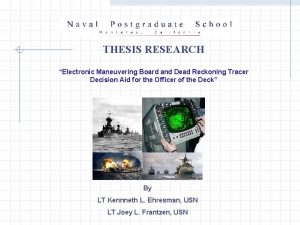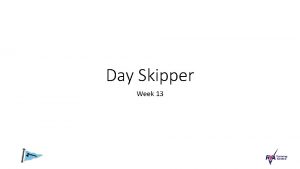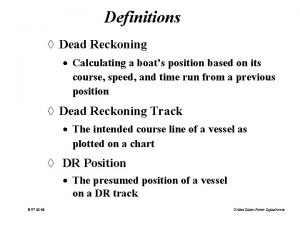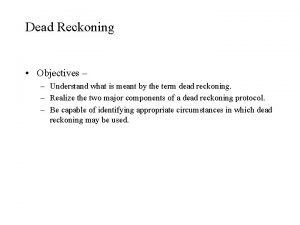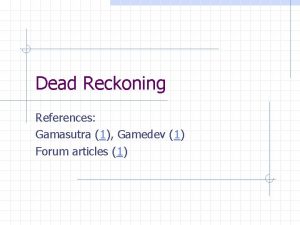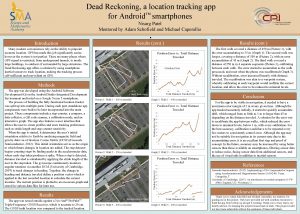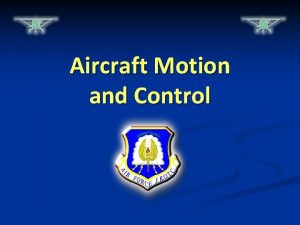Dead Reckoning and Wind WarmUp Questions CPS Questions
























- Slides: 24

Dead Reckoning and Wind

Warm-Up Questions CPS Questions 1 -2 Chapter 4, Lesson 3

Lesson Overview The basic principles of dead reckoning The wind triangle and its application in air navigation How the principles of dead reckoning relate to inertial navigation systems Chapter 4, Lesson 3

Quick Write How might a pilot deal with a strong wind blowing his or her aircraft off course? (Note to teacher: Use “Pick a Student” button in CPS) Chapter 4, Lesson 3 Courtesy of USAMHI

Basic Principles of Dead Reckoning Dead reckoning is navigation based on computations using time, airspeed, distance, and direction By itself works best over short distances When flying over land, a pilot can combine dead reckoning with pilotage Chapter 4, Lesson 3 Reproduced from NASA

Dead Reckoning Involves Five Steps Ø The pilot: 1. 2. 3. 4. 5. Charts a course starting at point A and ending at point B Then figures out the true course Works out which compass heading to follow with the magnetic compass Estimates airspeed and divides that into the distance Calculates fuel use in gallons per hour Chapter 4, Lesson 3

Activity 1: Dead Reckoning Review the information on dead reckoning in the textbook Read more about dead reckoning from the NASA Virtual Skies Aviation Navigation section Use both resources to answer the questions Chapter 4, Lesson 3

The Wind Effect Wind is one of the variables when a pilot is using dead reckoning At the end of an hour-long flight, the plane position is the result of two motions: Ø The movement of the air mass over the ground Ø The aircraft’s forward movement through the air mass Chapter 4, Lesson 3 Reproduced from NASA

The Wind Effect, cont. The direction in which an aircraft points as it flies is known as heading An aircraft’s path over the ground, a combination of the aircraft’s motion and the air’s motion, is its track The angle between the heading and the track is the drift angle Chapter 4, Lesson 3 Reproduced from US Department of Transportation/Federal Aviation Administration

How to Find the Compass Heading Find the true course Apply wind correction for a true heading (TH) Follow the formula: (TH ± magnetic variation [V] = magnetic heading [MH] ± compass deviation [D] = compass heading [CH]) Wind correction angle—angle between aircraft’s desired track and the heading needed to keep the aircraft flying over its desired track Chapter 4, Lesson 3 Reproduced from US Department of Transportation/Federal Aviation Administration

Learning Check Questions CPS Questions 3 -4 Chapter 4, Lesson 3

Wind Triangle and Its Application in Air Navigation Wind triangle is a method for dealing with the effect of wind on flight Pilot can find the groundspeed, heading, and time for any flight by using the wind triangle Chapter 4, Lesson 3 Reproduced from US Department of Transportation/Federal Aviation Administration

Time and Fuel First the pilot calculates the distance to the destination by measuring the length of the course line Then divides the distance by the groundspeed To figure fuel use the pilot multiplies the fuel use by the flight time Chapter 4, Lesson 3

Activity 2: Principles of a Wind Triangle Examine the illustration Answer the questions about the wind triangle and its application in air navigation Chapter 4, Lesson 3

Activity 3: Wind Triangles and True Headings Create a wind triangle and answer the questions Calculate true heading Chapter 4, Lesson 3

Learning Check Questions CPS Questions 5 -6 Chapter 4, Lesson 3

How Dead Reckoning Relates to Inertial Navigation Systems Modern way to compute dead reckoning is the inertial navigation system (INS) Pilot starts the INS before taking off Pilot enters the aircraft’s exact location and destination Pilot can also program the INS with waypoints Chapter 4, Lesson 3

Parts of the INS One of the main parts is the accelerometer Typical INS contains three accelerometers to record; north-south, east-west, and up-down The gyroscope measures direction in the INS Chapter 4, Lesson 3 Reproduced from US Department of Transportation/Federal Aviation Administration

System Errors Time is an INS’s greatest enemy Accelerometers and gyroscopes make small errors adding up to bigger errors over a long flight Best INS may be off by 0. 1 to 0. 4 nautical miles over the course of a four- to six-hour flight Chapter 4, Lesson 3

Activity 4: Gyroscopes, Gyrocompasses, and Attitude Indicators Read the information from NASA Virtual Skies about gyroscopes, gyrocompasses, and attitude indicators Answer the questions Chapter 4, Lesson 3

Learning Check Questions CPS Questions 7 -8 Chapter 4, Lesson 3

Summary The basic principles of dead reckoning The wind triangle and its application in air navigation How the principles of dead reckoning relate to inertial navigation systems Chapter 4, Lesson 3

Review Questions CPS Questions 9 -10 Chapter 4, Lesson 3

Next…. Done – dead reckoning and wind Next – flight instrumentation Chapter 4, Lesson 3 Reproduced from US Department of Transportation/Federal Aviation Administration
 Pilotage and dead reckoning
Pilotage and dead reckoning Wind and the reckoning
Wind and the reckoning Terrain types
Terrain types Dead reckoning land nav
Dead reckoning land nav Juan soriano la niña muerta; the dead girl; dead infant
Juan soriano la niña muerta; the dead girl; dead infant Warmup ratio
Warmup ratio Warmup 65
Warmup 65 Gmass warmup
Gmass warmup Stratified warmup
Stratified warmup Pyramid warmup
Pyramid warmup Monorhyme
Monorhyme Multiplying exponents with same base
Multiplying exponents with same base Java warmup
Java warmup Define:warmup
Define:warmup Ethos warmup
Ethos warmup Tinman warm up
Tinman warm up Warmup 65
Warmup 65 Warmup end
Warmup end Wind von backbord weicht wind von steuerbord
Wind von backbord weicht wind von steuerbord Elagse
Elagse Kinders van die wind poem questions and answers
Kinders van die wind poem questions and answers Cps algebra exit exam
Cps algebra exit exam Cps in project management
Cps in project management Ipums cps
Ipums cps Cps freshman connection
Cps freshman connection
